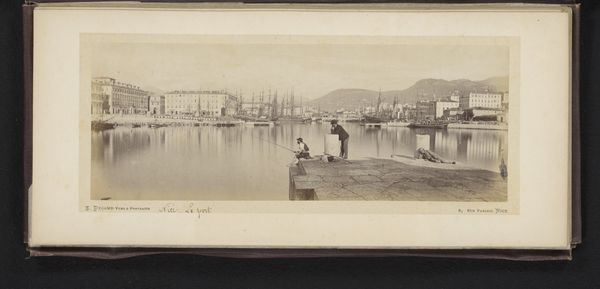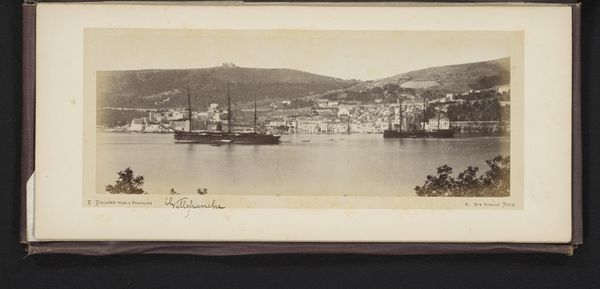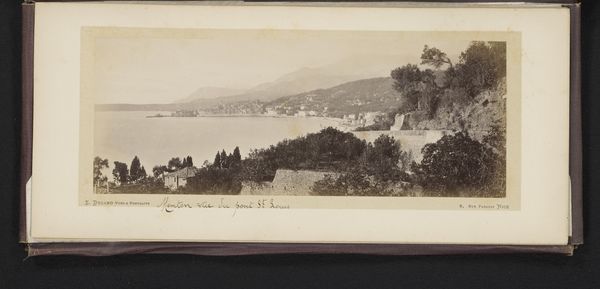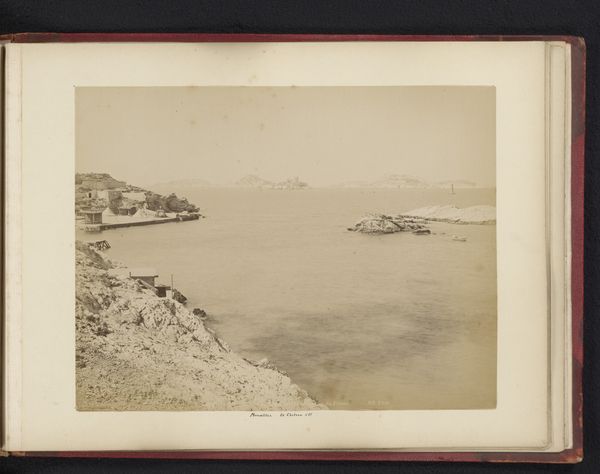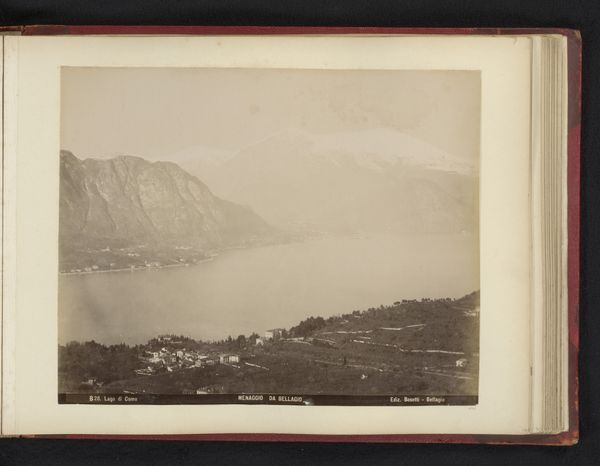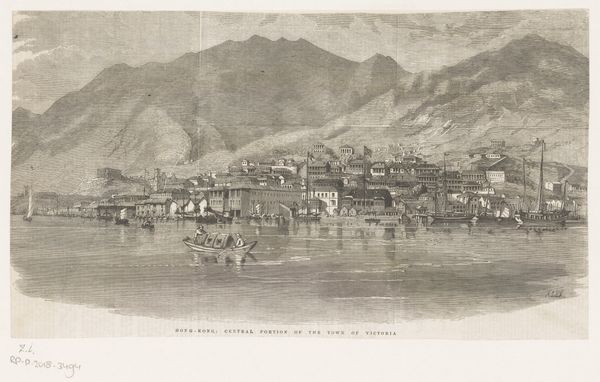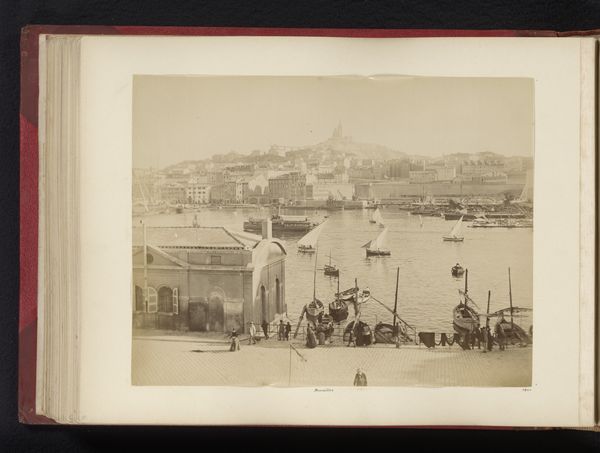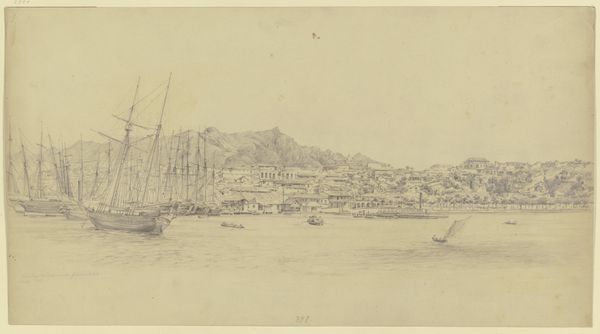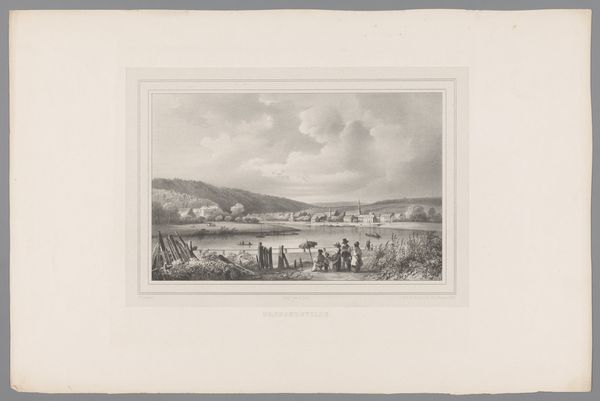
#
aged paper
#
toned paper
#
muted colour palette
#
sculpture
#
white palette
#
unrealistic statue
#
mountain
#
pencil art
#
watercolor
#
historical font
#
statue
Dimensions: height 221 mm, width 84 mm
Copyright: Rijks Museum: Open Domain
Curator: This is "Visser uitkijken op San Remo" or "Fisherman Looking Out on San Remo", a photograph dating from approximately 1872 to 1874 by Eugène Degand. It's rendered in watercolor and pencil on toned paper. Editor: My first impression is one of immense calm. The muted palette creates a tranquil atmosphere; the composition is neatly split by a serene expanse of water reflecting a mountainous skyline, offering a view of San Remo. It has a beautifully balanced but almost sepulchral stillness. Curator: It’s fascinating how Degand balances documentary and artistry here. The tonal variations achieved through the pencil and watercolor work really highlight the interplay of light and shadow, particularly across the built environment and the mountains beyond. Editor: Precisely. One can discern the subject is arranged very deliberately; on closer examination, the fisherman, the primary subject in terms of his material relation to the bay, sits quite deliberately amongst baskets, which indicate his labour and trade; this brings the scene, ostensibly one of ‘looking’ or reflection, back down to earth; back into the tangible materiality of daily labour. Curator: Do you see, also, how the geometry inherent in the buildings—the blocks and right angles—is softened and naturalized by the way the pencil renders them? This imbues the structural forms of the cityscape with an atmospheric quality. Editor: That reminds us to attend to the context in which the image has been crafted; to consider the social function of the work as perhaps contributing to, and cementing, certain picturesque ideals of what the bay *means*, its function more aligned with facilitating and consolidating tourist impressions. The method and arrangement would therefore necessarily need to present San Remo and its bay in a sympathetic, tranquil light, devoid of the messier aspects of everyday life and hard labour. Curator: Indeed, and to focus on how the formal qualities—the balance of horizontal and vertical, the subtle gradations of tone—work to elevate a simple scene into an emblem of peace and order. Editor: Well said. Ultimately, considering the perspective, both literally and figuratively, reveals complex dynamics at play; it serves as both a moment of reflective pause for the fisherman *and* a curated viewpoint for a broader, probably leisured audience. Curator: Thank you, it is rewarding to notice how this particular balance lends the piece a subtle, compelling charge. Editor: Agreed; to contemplate labor and artistry side by side provides a nuanced lens on that specific historical moment.
Comments
No comments
Be the first to comment and join the conversation on the ultimate creative platform.
